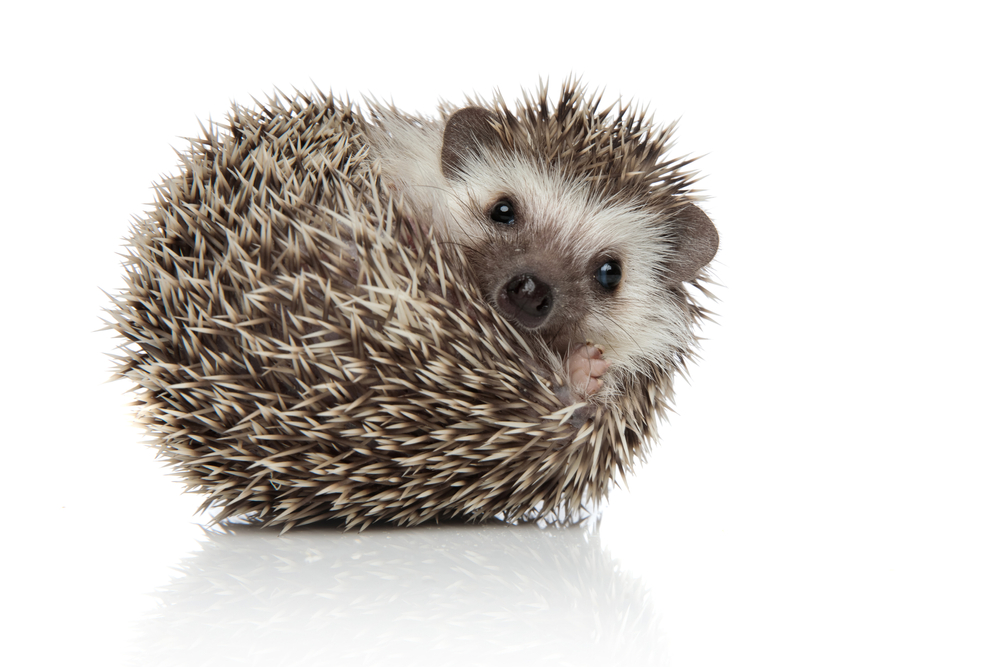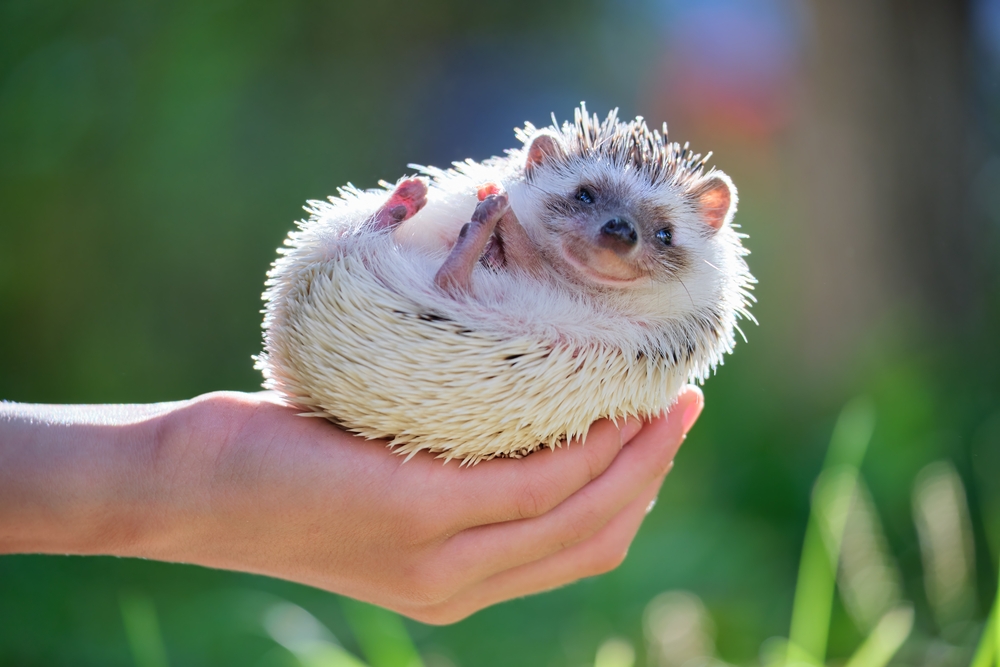Hoping for a Hedgehog? 10 Things to Know Before Bringing One Home
Updated on November 18, 2024

Wild hedgehogs have been living in Africa forever but only in recent years have they been kept as pets. Most North American pet hedgehogs, typically called African pygmy hedgehogs, were bred from African species and are considered domesticated. These little animals can make terrific companions when housed and fed appropriately, and their popularity appears to be increasing. But hedgehogs are not meant for everyone. Before you consider bringing a hedgehog into your home, there are several things to be aware of.
1. Hedgehogs Are Prickly
Like porcupines, the skin over hedgehogs’ backs is covered with sharp spines that protect them from predators. Thankfully, unlike our native porcupines, hedgehogs cannot shoot their quills out in defense. When caught in the mouth of a predator, however, hedgehogs will twitch and jump so that their quills poke into the skin and lips of the aggressor, making things generally unpleasant until they are released. Handling a nervous hedgehog can be tricky for an owner, and you may need to hold your friend in a small towel until he relaxes.
2. They Like to Play ‘I’m Out of Here’
As a defense mechanism, hedgehogs roll their bodies into tight little balls when threatened, causing their spines to point outward so that predators are unable to see their faces or limbs. They have very strong muscles over their backs, and it is nearly impossible to unfurl a hedgehog once he’s curled up. Pet hedgehogs must be handled gently and often to get them to relax and uncurl. Otherwise, you will spend a lot of time staring at a cute but prickly little ball in your lap.
3. ‘Spit Balls’ Are OK
When a hedgehog encounters an object with a new scent, he will lick and bite the object and then form a frothy “spit ball” in his mouth containing the new scent. He will throw his head back and spit this frothy saliva over his spines with his tongue, possibly to camouflage himself with the new scent and make himself less obvious to predators. If you see your pet hedgehog engaging in this “self-anointing” behavior, don’t worry: It’s gross but completely normal.
All featured products are chosen at the discretion of the Vetstreet editorial team and do not reflect a direct endorsement by the author. However, Vetstreet may make a small affiliate commission if you click through and make a purchase.
4. Hedgehogs Are Not Mini Porcupines
Interestingly, though quilled porcupines are rodents, quilled hedgehogs are not. They are classified as insectivores (insect eaters) instead. They are not strict insectivores, however, as they consume a variety of foods in the wild, including snails, amphibians, lizards, snakes, birds’ eggs, fish, carrion, mushrooms, grass roots, berries and melons.
Domesticated pet hedgehogs typically eat a limited number of insects (mealworms, crickets, earthworms, wax worms) in favor of commercially available pelleted formulas manufactured just for them. They can also eat a small amount of vegetables, fruit and cooked meat. Given their desire to catch live prey, pet hedgehogs should not be offered large amounts of insects or they will likely eat them to the exclusion of other foods needed for a balanced diet.
5. They Like the Night Life
In the wild, hedgehogs are active at night, since that is when their food is available. Domesticated pet hedgehogs have maintained this nocturnal lifestyle, sleeping a good portion of the day and running in wheels at night. If you’re a light sleeper, go to bed early or are out a lot at night, a hedgehog may not be the best pet for you. They may also like to chill out in a hedgehog bed cave.
6. Hedgehogs Are ‘Hogs’
Hedgehogs love to eat, and if they are housed in cages with little opportunity to socialize and exercise, they tend to put on weight. Obesity is a common problem among pet hedgehogs. Fat hedgehogs typically have very pudgy limbs and large amounts of subcutaneous fat protruding from underneath their mantel (the spine-covered top part of their bodies).
Obese hedgehogs may not be able to roll up like other hedgehogs, and those who eat excessive numbers of insects may suffer from calcium deficiency and brittle bones. Overweight hedgehogs should be put on restricted amounts of food and encouraged to run around outside their cages or inside them on wheels.
7. They Squeal, Snort and Snuff
Many people think hedgehogs are silent, but they vocalize through a variety of grunts, squeals, snorting and snuffling sounds. They commonly vocalize when exploring their environments. They may also puff, click or hiss when nervous or upset or whistle or purr when happy. They typically make screaming sounds when they are in pain.
8. Hedgehogs Carry Human Disease Risks
Like all other animals, hedgehogs may carry a handful of diseases that are contagious to people, including Salmonella bacteria in their stool. They can also carry fungal spores on their quills and skin that cause ringworm in people. This fungus may cause quill loss and dry flaky skin on the hedgehog. As with all other pets, hedgehog owners should be sure to thoroughly wash their hands after handling their pets or cleaning their cages.
9. Heat and Cold Extremes Influence Their Behavior
European hedgehogs who live in the wild will hibernate when the climate gets very cold and food sources become scarce. They do this to reduce their metabolism and maintain their body temperature. Similarly, during hot months, when food supply is limited, African pygmy hedgehogs drastically reduce their activity and sleep more — a state called aestivation — to reduce their metabolic rate and prevent overheating.
Though wild hedgehogs have developed these behavior patterns as adaptations to climate changes, domesticated pet hedgehogs should not exhibit either pattern but remain active, since their environmental temperature and food supplies should be constant. When pet hedgehogs hibernate or aestivate, they can lose weight, become ill and even die. If your pet is exhibiting any unusual behaviors, contact your veterinarian.
10. They Bond With Their Owners

Any hedgehog owner who has spent a significant amount of time interacting with his pet and socializing it will tell you that a hedgehog responds to an owner’s voice and appearance. Nervous, balled up hedgehogs may unfurl only when they hear their owners’ voices and smell their owners’ scents.
Hedgehogs can be adorable, loving pets if they are handled often and made less fearful of people. Unsocialized hedgehogs who are never or rarely handled, however, may remain nervous, jumpy and tightly curled up. So if you’re thinking of having a hedgehog, realize that these cute little prickly pets need time, attention and tender loving care to thrive and be interactive.
More on Vetstreet.com:


